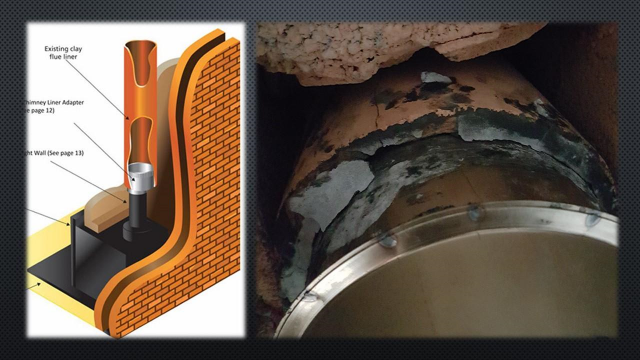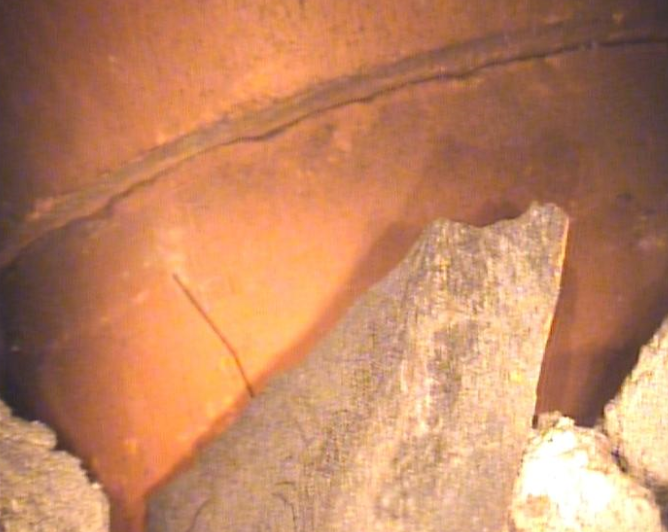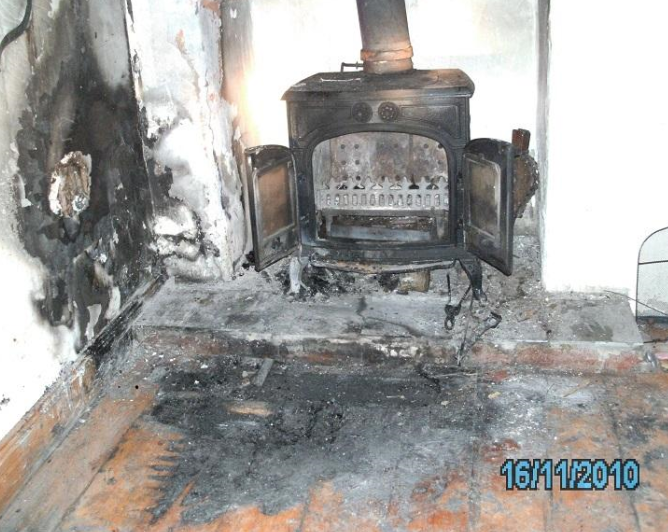Chimney Advice
It’s that time of year again when everyone starts reusing their chimneys. Please note the 1st three fires being lit should be small as you are now reintroducing heat into a cold flue. Lighting a big fire in a cold clay flue lined chimney can crack the clay flue liners due to thermal shock.
Buyer Beware
- Please note just because someone claims to be a chimney sweep this does not mean they have been professionally trained or assessed in the field. Please note anyone can purchase a hammer and wood saw from any builder’s suppliers but that doesn’t make them a qualified carpenter.
- Scammers carrying out “half cleans” for €35. I was investigating a large number of chimney fire claims for several household insurance companies in Co. Wicklow. I found one scammer (No Public Liability Insurance) was using a vacuum cleaner to remove only the chimney deposits from the smoke shelf located directly above the fireplace opening. The householders were very impressed with his service as he left no mess. The scammer never swept the flue which caused the build-up of chimney deposits above the smoke shelf to ignite, the Irish Fire Service to be called out to extinguish the chimney fire and the unnecessary chimney fire insurance claim which followed.
- Scammers using incorrect equipment i.e., sweeping an 8 metre flue which has a chimney cowl in situ. These scammers will only sweep 5 metres up the flue as they are afraid of knocking the chimney cowl off.
- Scammers using 150 mm diameter brushes to sweep 200 mm diameter flues are not fit for purpose. The 200 mm diameter flue will be reduced preventing the carbon gases (smoke) from safely evacuating to the outside atmosphere causing smoke to spill back into the property.
- Scammers using vacuum cleaners that do not have Hepa filters in situ means chimney deposits that are being hoovered up at one end will spread all over the furniture, carpets via the vacuum cleaner’s exhaust.
- Customer contacts a chimney company requesting a chimney sweep service. Chimney sweep powersweeps a 100 year old brick chimney using a drill causing bricks to fall down onto the inner hearth. Chimney sweep advises the customer that she should not use the flue and will need to have the chimney CCTV surveyed for a fee of €300 paid in advance by card. Sweep carries out a CCTV chimney survey and the chimney company office advises the customer that they can reline the chimney for a fee of €15,000.
- Son tries to get his +80 year old mother’s chimney swept. Chimney company advises they will travel the 50 kilometer distance and sweep the chimney for $50.00 (Red Flags). Two chimney company men enter the property and advise the elderly lady that her chimney has suffered a chimney fire. They never swept the flue and told her that they had used a chimney camera to find the damage. The lady showed me the box that the chimney company man had left behind.

Chimney fires and household insurance claims associated with the same are on the increase due to the unprofessional installation of solid fuel stoves and inset stoves by retailers and tradesmen who have no qualifications in the safe installation of these appliances. Many solid fuel stove retailers and installers will advertise that they are HETAS approved. Please be advised HETAS has no jurisdiction in Ireland. HETAS installers in Ireland cannot self-certify their own installations. Householders are not being informed of the dangers associated with the above.
I would strongly advise when purchasing a solid fuel stove from a retailer and/or installer to always ask the retailer and/or installer if they are professionally insured? I would advise requesting a copy of the insurance certificate and to contact the insurance company to ensure the insurance certificate is valid. I would also advise asking the retailer and/or installer if they have ever had a court judgement against them? If they reply “no” get it in writing.
Retailers selling and installing solid fuel stoves employing 200mm-150mm stainless steel clay flue reducers/adaptors are in breach of Building Regulations 2014 Technical Guidance Document J Heat Producing Appliances. This reducer/adaptor (shown below) cannot safely contain the products of combustion allowing chimney condensates to run down the outside of the reducer.

Below is yet another example of shoddy workmanship. The installation on the left of the picture shows how simple it is to install the stainless-steel clay pot reducer. However, in the real world this installer has damaged the clay flue liner meaning this chimney is now not safe to use.

Chimney sweeps that offer an OFTEC chimney certificate as a marketing tool are in breach of the Sales of Goods and Services Act as OFTEC is not a legal requirement in the Republic of Ireland.
Please note Sweep safe chimney certificates are not fit for purpose as you have to sign a disclaimer removing any legal responsibility from the sweep safe chimney sweep.
Sweep safe advising the Irish general public that Irish Insurance companies require a sweep safe chimney certificate is false and is also in breach of the Sales of Goods and Services Act.
Examples of chimney fire damage
Scorch Marks
Vertically Cracked Clay Flue Liners
The photo above clearly shows a clay flue liner piece missing.

This picture not only shows that this chimney is damaged, but it also shows there is no midfeather/dividing wall in situ, and we can see into the neighbouring flue.

I was instructed to investigate a potential chimney fire claim. However, this was not a chimney fire. The fire damage seen above was caused by the householder leaving wood fuel too close to the solid fuel stove. The heat generated by this solid fuel stove caused the wood fuel to ignite.
The picture below is of a wooden floor in a 1st floor bedroom which was ignited by the unprofessional installation of a solid fuel stove on the ground floor. The woman woke up to find the bedroom floor on fire and was extremely fortunate to escape without injury.




